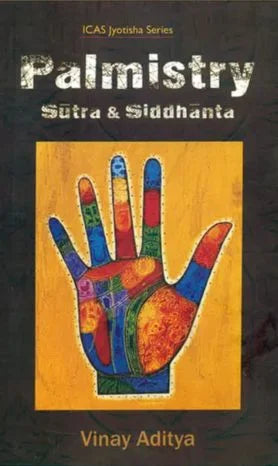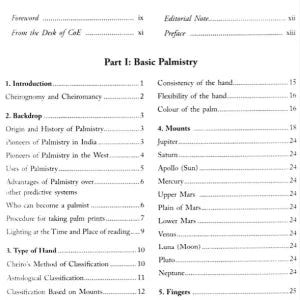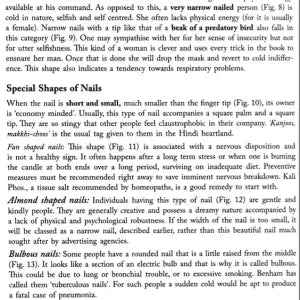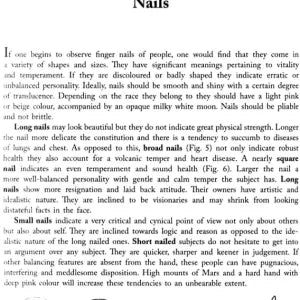Palmistry – Sutra & Siddhanta
Palmistry – Sutra & Siddhanta is backordered and will ship as soon as it is back in stock.
Couldn't load pickup availability
Genuine Products Guarantee
Genuine Products Guarantee
We guarantee 100% genuine products, and if proven otherwise, we will compensate you with 10 times the product's cost.
Delivery and Shipping
Delivery and Shipping
Products are generally ready for dispatch within 1 day and typically reach you in 3 to 5 days.
Book Name: Palmistry: A Logical Approach
Author: Vinay Aditya
Publisher: ICAS Publication
Edition: 2018
ISBN: 9788193770443
Pages: 194
Cover: Paperback
Dimensions: 24 cm x 19 cm
Weight: 380 gm
Origin: India
Book Overview:
This book presents Palmistry as a logical, rational, and common-sense practice that is often misunderstood and relegated to the realm of the occult. The author, Vinay Aditya, explores palmistry through a technical lens, presenting it as an ancient and insightful system that has roots in Samudrik Shastra, a traditional Indian science that studies the signs and marks on the human body and palms.
The book highlights the wealth of information one can gather from the hands, with a focus on making palmistry more accessible and understandable for the modern reader. It addresses the misconceptions surrounding the practice and aims to remove it from the realm of pseudo-science, positioning it as a legitimate tool for gaining self-knowledge.
Key Features:
-
Logical Approach to Palmistry: The book provides a rational and logical framework for understanding palmistry, showing how it is not just about mystical or esoteric knowledge, but a practical tool for self-discovery and analysis.
-
Historical Context: Drawing on the works of famous practitioners like Cheiro, the book illustrates how palmistry has been used for centuries, and how even renowned practitioners relied on ancient manuscripts and knowledge passed down through generations.
-
Integration with Other Sciences: Palmistry is presented as a complementary tool, much like other traditional practices, that can help individuals understand themselves better in a practical, non-mystical way.
-
Practical Application: The book provides a clear, step-by-step approach to palmistry, demonstrating how one can read the lines and features of the palm to gain insights into personality traits, tendencies, and potential future outcomes.
Core Concepts:
-
Scientific Basis: Although palmistry is often categorized as an occult science, the book emphasizes its practical and rational aspects, arguing that it is rooted in logic and observation rather than superstition.
-
The Role of the Hands: The book dives deep into how the hands carry information that can reveal a person’s character, behavior, and even predict events in their life.
-
Cheiro’s Influence: It also touches on the influence of Cheiro, one of the most famous figures in palmistry, whose reverence for Indian palmistry manuscripts contributed to his worldwide success.
Ideal For:
-
Students of Palmistry: Those looking to explore palmistry in a systematic, logical way, without the mystical connotations often associated with the practice.
-
Beginners and Advanced Practitioners: Both newcomers and experienced palmists can benefit from this book, as it lays out the technical aspects of palmistry in an easily understandable format.
-
Self-Improvement Enthusiasts: Those interested in self-analysis and self-improvement can gain valuable insights into their own character and potential life paths through the study of palmistry.
Themes Explored:
-
Debunking Myths: The book challenges common misconceptions about palmistry, urging readers to view it not as an occult science but as an ancient, practical system for gaining a deeper understanding of oneself.
-
Connection to Indian Knowledge: The roots of palmistry in ancient Indian traditions are explored, showing how this ancient knowledge was passed down and integrated into modern palmistry practices.
-
Cheiro's Legacy: Cheiro's work is highlighted, particularly how his understanding of palmistry was influenced by ancient Indian teachings.
This book offers a fresh perspective on palmistry, presenting it as a rational and logical discipline that can provide real insights into personal development, all while maintaining its connection to ancient wisdom.
Would you like to explore any specific chapters or concepts further in this book?











